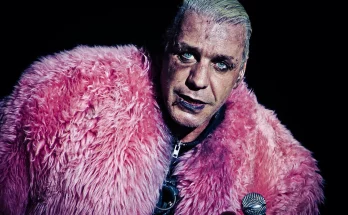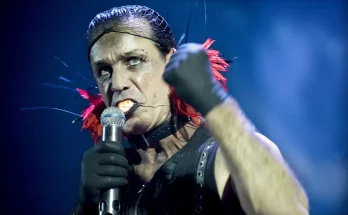The announcement of Vikings 2 (2026): The Final Saga has sent waves of anticipation through fans of the historical drama epic, a series that has long been celebrated for its gripping blend of Norse mythology, gritty realism, political intrigue, and unforgettable characters. For over a decade, the world of Vikings has captured the imagination of audiences across the globe, first with the groundbreaking original series centered on Ragnar Lothbrok, then with Vikings: Valhalla, which picked up a century later to explore the stories of Leif Erikson, Freydis, Harald Hardrada, and the next generation of explorers, warriors, and kings. Now, with the promise of The Final Saga, the universe prepares to bring its sprawling narrative full circle, unlocking the fate of Ragnar’s legacy and closing the book on one of television’s most enduring historical sagas.
At the heart of Vikings has always been the question of legacy. Ragnar, as played by Travis Fimmel, became a cultural icon because he embodied the restless spirit of change in the Viking Age: a farmer who became a king, a visionary who sought to expand horizons, and a father whose decisions rippled through generations. While Ragnar himself met a brutal but unforgettable end in the original series, his influence never truly disappeared. His children—Bjorn Ironside, Ivar the Boneless, Ubbe, and Hvitserk—each carried different fragments of their father’s ambition, ruthlessness, and vision. Similarly, Vikings: Valhalla showcased how Ragnar’s legend lived on, still shaping how later generations understood what it meant to be a Viking, a conqueror, and a seeker of glory. This final installment promises to weave these threads together, examining not just the wars and voyages that defined the era but also what Ragnar’s life ultimately meant in the grand story of Norse history.
The announcement of The Final Saga has been accompanied by both excitement and speculation. Fans are eager to know which characters will anchor the story. Since Valhalla concluded by bringing Harald Hardrada closer to his historical destiny at Stamford Bridge in 1066, many suspect the saga will lean into the transition point between the Viking Age and the dawn of the medieval world dominated by rising kingdoms of England, France, and beyond. This is historically fitting, as Harald’s death marked the symbolic end of the Viking Age. But what makes the narrative even more compelling is how the writers might intertwine Ragnar’s shadow with this conclusion. Will Ragnar’s bloodline play a direct role in this final chapter? Will his legend serve as a guiding spirit that influences how Vikings face their ultimate decline? Or will the series leave audiences with the haunting recognition that no matter how powerful a man’s legacy, history inevitably moves forward, leaving even legends behind?
Another layer that makes this final chapter compelling is how Vikings 2 could resolve the thematic duality that has always run through the franchise: the clash between the old gods and the rising tide of Christianity. From the earliest seasons, Ragnar himself represented a figure caught between two worlds. Though devoted to Odin, he often questioned the gods, intrigued by the faith of the Christian monk Athelstan. This tension passed down to his sons, and in Valhalla it became even more pronounced as Norse characters contended with the dominance of Christianity in Europe. As the saga approaches its conclusion, it seems inevitable that this ideological struggle will come to the forefront. The final story may not only close Ragnar’s family’s arc but also answer whether the Norse way of life can survive in a changing world, or whether it will be absorbed into the tide of history.
Cinematically, fans expect The Final Saga to push boundaries. The original series broke ground with its raw, visceral battle sequences, particularly in episodes like “The Battle of the Bastards”-style clash of Ragnar’s sons or Lagertha’s bloody defense of Kattegat. Valhalla expanded that scope with more ambitious naval scenes, sprawling sieges, and journeys across continents. With this final chapter, there is every expectation that the production will deliver the most epic depiction yet, not just as spectacle but as a way of underscoring the scale of what is being concluded. If the reports are true that the show will culminate in 1066 with the Battle of Stamford Bridge, audiences may witness one of the most iconic battles in European history rendered in meticulous detail, capturing both the glory and the tragedy of the Viking warriors’ last stand.
Character arcs will, of course, be central to the emotional weight of the story. While Ragnar’s direct descendants have largely passed from the narrative, his symbolic children—those who carried fragments of his vision—remain important. Harald Hardrada, known historically as “the last great Viking,” embodies Ragnar’s restless ambition and hunger for power. Freydis, with her fierce devotion to the old gods and uncompromising will, represents Ragnar’s defiance of convention and his unwillingness to bow before anyone. Leif Erikson, the explorer who pushed beyond the known world, reflects Ragnar’s yearning to see what lies over the horizon. These figures serve as echoes of Ragnar’s spirit, each one interpreting his legacy in different ways. The final saga may not resurrect Ragnar himself, but it will show how his essence lives on through those who came after.
Another significant element likely to shape Vikings 2 is the way it balances myth and history. One of the defining traits of the franchise has been its willingness to embrace both the recorded events of history and the mythological imagination of the Norse world. Ragnar himself was a semi-legendary figure, with historians debating whether he ever existed, yet the series brought him vividly to life. Similarly, scenes of Odin, visions of Valhalla, and mythological motifs have always woven themselves into the fabric of the story. In the final saga, one can expect an even greater interplay of history and myth, as the death of the Viking Age is dramatized not just as political fact but as the end of a world of gods, sagas, and ways of life. Perhaps the series will give audiences visions of Ragnar, Odin, or other figures appearing to characters as they face their destinies, blurring the line between human memory and divine presence.
The cultural impact of Vikings also cannot be understated, and it is part of why this final saga carries such weight. Since its premiere, the franchise has reinvigorated popular interest in Norse history and mythology, spawning documentaries, academic debates, and a surge of Viking-inspired media. Beyond its entertainment value, it has become a lens through which audiences around the world explore questions about identity, faith, ambition, and legacy. Ragnar’s story, though rooted in a specific cultural context, resonated universally because it asked questions every generation confronts: What do we leave behind? How do our choices shape those who come after us? Does greatness justify sacrifice? The Final Saga has the opportunity to deliver a conclusion that cements the series as one of television’s great epics, remembered not just for its action but for its philosophical depth.
Speculation also surrounds whether past characters will return in visions, flashbacks, or symbolic appearances. Travis Fimmel’s Ragnar remains a fan favorite, and while his death was definitive, the series has never shied away from bringing characters back in spiritual or hallucinatory forms. Viewers would undoubtedly welcome one last glimpse of Ragnar, perhaps appearing to Leif, Freydis, or Harald in moments of crisis, serving as a reminder that legacies do not end with death. Similarly, characters like Lagertha, Bjorn, and Ivar could reappear in some form, their memories haunting the final journey. These possibilities are tantalizing because they connect directly with the theme of legacy—the idea that those who came before continue to shape the present.
As the release of Vikings 2 (2026): The Final Saga approaches, expectations are immense. The task of concluding a story of this scope is not easy. The creators must balance historical accuracy with dramatic storytelling, provide satisfying closure for characters, and honor the mythic resonance of Ragnar’s legacy without diminishing the grounded realism that made the series so compelling. Yet, if done well, the finale could stand alongside the greatest conclusions in television history, delivering a cathartic farewell that lingers long after the final credits roll.
What makes this moment particularly poignant is that it marks not just the end of a show but the end of an era in television storytelling. When Vikings first debuted, few could have predicted how deeply it would embed itself in popular culture. Its success paved the way for other historical dramas, challenged how networks approached serialized storytelling, and proved that audiences craved stories that were brutal, poetic, and unafraid to wrestle with big questions. Now, with the final saga, the series has a chance to complete its arc in a way that honors its roots while embracing the inevitability of change—just as the Viking Age itself did.
Ultimately, The Final Saga will not just be about Ragnar, his children, or even the historical figures who defined the end of the Viking Age. It will be about the idea of legacy itself. Ragnar once asked what it means to be remembered, and this question has echoed across every season since. The conclusion will likely remind audiences that legacy is never simple. It is not about immortal glory or even historical recognition alone. It is about the ways one’s actions reverberate through time, influencing people, cultures, and stories long after death. For Ragnar, that legacy lives not only in the bloodlines of kings and explorers but in the imaginations of viewers who continue to tell his story. With Vikings 2 (2026), the circle will close, and audiences will bear witness to the final chapter of a saga that has defined a generation of storytelling.



